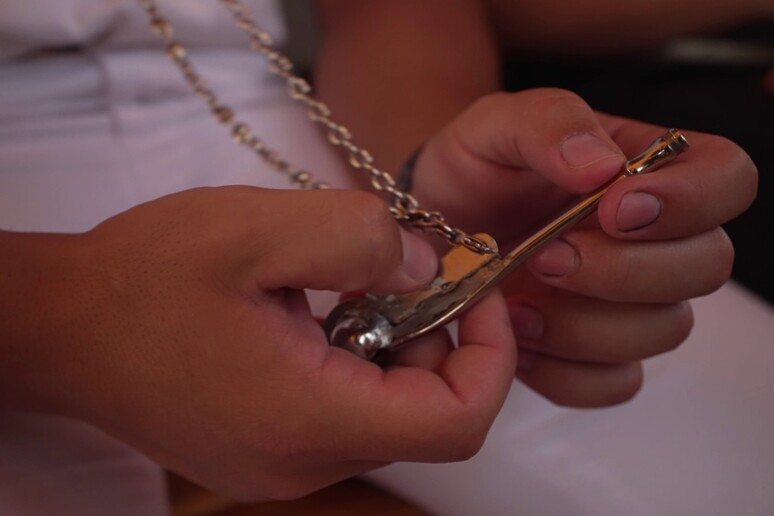(by correspondent Domenico
Palesse)
The white uniforms, lined up next to each other.
A series of whistles in a time that seems to be suspended.
Everything on board stops, motionless.
The noises give way to silence.
The only one allowed to 'speak' is the sea, which caresses the
hull with its waves while the crew pays homage to the
authorities who board or disembark the ship.
A solemn, timeless moment, which the Amerigo Vespucci has the
ability to amplify, with its wooden gangways, shiny brass and
the majesty of its masts and sails.
The "ceremonial" includes a different number and type of sounds
based on the authority concerned.
And so the "four to the band" is ordered for officers up to the
rank of captain of the vessel, while the highest honors ("eight
to the band") are reserved for the national flag, heads of state
or the fallen.
A custom, that of the trills of the whistle, which once served
to call the number of sailors who would have to go down to the
'band' (that is, the handrail of the 'brandizzo', the ladder to
enter the ship) to light the passage with their lanterns for the
authorities.
The number of lanterns was higher based on the rank, and
therefore the seniority, of the authority who, therefore, would
have needed more light to reach the ship.
The tradition of whistling on board military ships has its roots
in the past centuries when the only way to communicate was
through the sound of a whistle, capable of overcoming the noise
of the wind during navigation.
The instrument is shaped like a small iron pipe, with a hole at
the top through which to modulate the tone of the whistle.
Every helmsman has one, his inseparable traveling companion that
he jealously guards and then passes it on, perhaps one day, to a
young cadet.
But to 'play' the whistle requires experience and skill that
matures over the years.
An art codified through a real score on which future helmsmen
practice, guided by what is considered the "orchestra
conductor", the boatswain.
On the Vespucci there are 85 helmsmen, five of whom are women,
and they make up about a third of the crew.
Considered the custodians of the seafaring art, they are the
ones in charge of operations on board, among knots, ropes, sails
and decks.
They know every corner of the ship, every secret of a sailing
ship like the jewel of the Navy.
Every operation on board has a distinctive whistle, a command to
be carried out only by listening to a sound.
"It was the only way in the past to be able to 'talk' to each
other without being overwhelmed by the wind - says the boatswain
of the Vespucci, Luca Zanetti.
"We are so used to using whistles that we are able to recognize
a helmsman simply by the tone of his whistle".
And there is someone on board who is also preparing a musical
work, exclusively for whistles.
ALL RIGHTS RESERVED © Copyright ANSA











